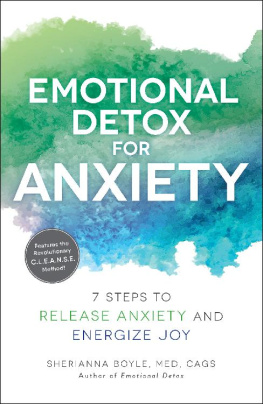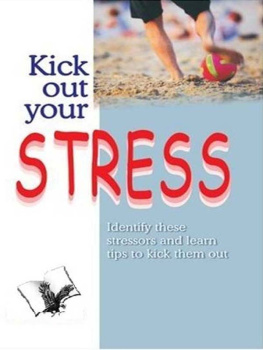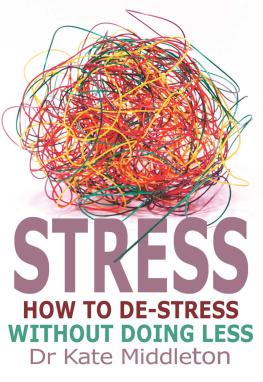Table of Contents
Stress Release Copyright by Diane Garrod. All Rights Reserved.
All rights reserved. This book or any portion thereof may not be reproduced or used in any manner whatsoever without the express written permission of the publisher except for the use of brief quotations in a book review.
ISBN: 978-1-0983768-0-2
CONTENTS
Introduction
Since nearly everyone at sometime or other has tried, or wished he knew how to train a dog, a cat, or some other animal, perhaps the most useful way to explain the learning process is to describe some simple experiments which the reader can perform himself.
-Skinner, 1951/1999, p 605
Working with challenging dogs, daily, it is my lifes work that their emotional well-being is taken seriously. Stress is a natural part of a canines life. It protects them from danger. Good stress (eustress) provides a sense of well-being and safety. It is when stress spikes go over threshold and take days to come down, or when stress goes over threshold and stays there that behavior problems arise.
The first person to discover stress was Scientist and Physician, Hans Selye, (1907-1982) introducing G.A.S., the General Adaptation Syndrome model (the process under which the body confronts stress) in 1936 showing in three phases of what the alleged effects of stress has on the body. In his work, Selye deemed the father of stress research, developed the theory that stress is a major cause of disease and chronic stress causes long-term chemical changes.
Early on, 1915, it was Dr. Walter B. Cannon who first developed the term fight or flight. Walter Cannon studied at Harvard University and stayed there to teach in the Department of Physiology. Although he was a physiologist by training, Dr. Cannon became interested in the physical reactions of his laboratory animals when under stress. While studying digestion in his animals, Dr. Cannon noticed that physical changes in the function of the stomach would occur when the animal was frightened or scared. He went on to study all the various physiological reactions to stress throughout the body.
In this book, you will discover that there are great benefits to releasing stress prior to implementing a behavior modification program. From sensory application to engaging the mind and brain in problem-solving activities, the Canine Emotional Detox (CED) provides the right combination of progressive elements to achieve stress release in challenging dogs in the form of a systematic process (Chapter 5, The Right Combination).
Ultimately the achievement of deep sleep is the goal. Once a stress release process has satisfactorily been completed then a force free behavior modification program is developed based on a detailed CED final analysis identifying patterns to help the individual dog move forward progressively and change emotional responses (CERs) while continuing stress release and keeping stress spikes within normal ranges.
Why Do A CED
The simple answer to why to do a CED is because it changes the dog from the inside outwardly. Feeling good internally, throughout body and brain, allows the dog to exhibit change outwardly. The feel-good chemicals grow, such as oxytocin, serotonin and the release or neutralization of the bad chemicals occur. Observing the patterns, the dog goes through allows for a customized behavior modification program that focuses on how a dog thinks, thereby keeping the process progressive, successful and results-oriented. Releasing stress is vital to allowing the dog to cope with real life effectively, to think through choices, make good decisions and to renew a relationship and bond that may have eroded due to behavioral challenges.
The CED is an intense 72-hour process and customized to the individual. The intensity is good and needed. It is like an intervention program for those suffering addictions and sometimes a dogs behavior will get worse before it gets better, especially in the second day. The body starts to feel different, better, but unfamiliar, if behavior has habituated.
What this book contains
The CED is not magic, it is not a recipe. The CED is based on physiology, neuroscience, and it is about changing the dog from the inside outwardly through a cleansing detox diet, evaluation of biologics such as waste, pH urine, respiration, weight, and muscle tension. It is about observing patterns of how a dog functions when presented with play and problem-solving. How a dog thinks has direct influence on the success of addressing challenges in a behavior modification program. This book is a workbook, a training manual for dog professionals working with highly stressed cases. Since it is the order of the process that relieves stress, skipping steps is not implementing the CED.
A new study in Plos One suggests it is okay to call oneself a pet parent, and that dogs bring joy much as children do. Researchers looked at brain scans of women who had at least one child between the ages of two and 10 and a dog for two or more years. The brain areas linked with emotion, reward and relationships lit up when they saw photos of their children and when they saw pictures of their dog. Besides offering affection, a dog can help with ones stress and heart health.
The CED allows the pet guardian to view their dog differently, implement activities with them and build a better bond and relationship all helping to move forward in a behavior modification and skills learning process. It can change the emotional bond in both species.
Ideally, the CED should precede behavior modification and skills in challenging dogs, but at the same time can be implemented any time during the process already in progress. If done in the right combination, it is very versatile. If you are reading this book, most likely you have a dog yourself, or a client dog that could use a stress release protocol. The following pages will show you how to do a CED properly and explain why and what happens internally and externally.
Dedication
FOR Chancellor who forced me to think deep and outside of the box and to find the answers to bringing a systematic stress release to client dogs and the world. Chancellor, my heart and soul dog, is the paw on my hand teaching me the missing link to working with challenging dogs and going beyond just diving into behavior modification before releasing stress. You were my teacher and muse, and your legacy will live on helping dogs around the world to thrive and live progressive, positive lives. (Chancellors story appears in Chapter two)
For all dogs facing challenges daily and their pet guardians, trainers, veterinarians, foster homes, and rescues and to understand your lives are important in the scheme of things. You will teach us ever more than we will ever teach you.
Illustration by Sue VanEtten, Langley, WA
R.I.P 4/03/2004 to 1/24/2015, I will light a candle in memory and I will cry, I will smile, and I will be happy you were in my life. Your memory lives on.
Acknowledgements
It is interesting how stress is so misunderstood in dogs and that just the release of distress, acute or chronic, can be highly instrumental in creating an environment of learning and progressive results.











